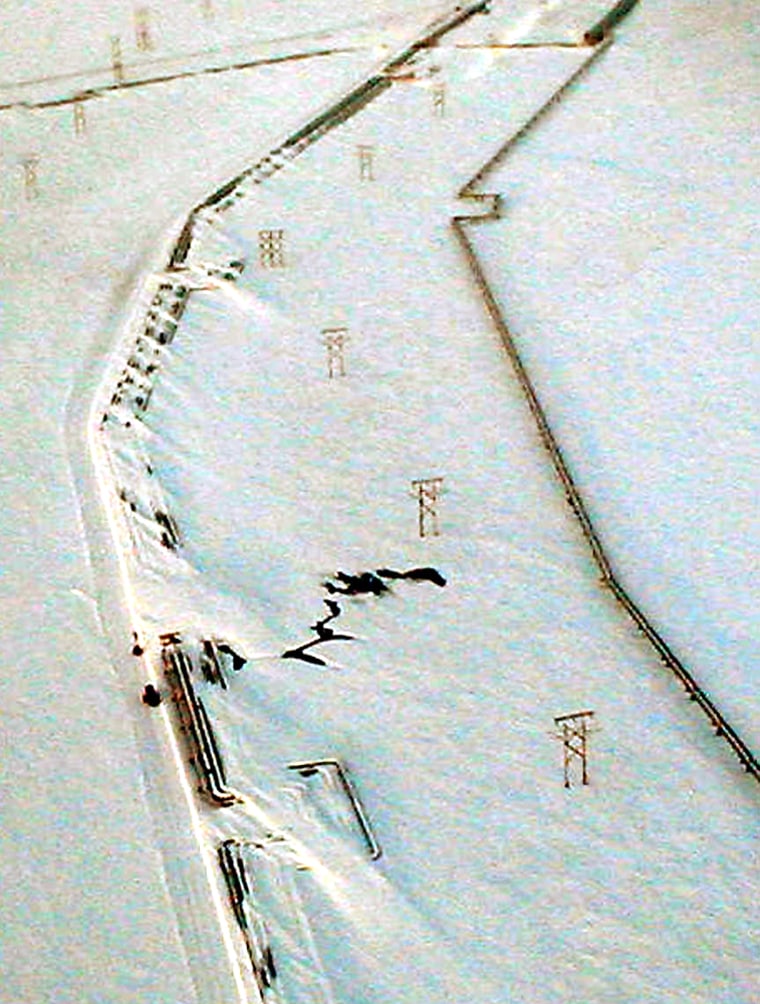An estimated 201,000 to 267,000 gallons of crude oil spilled in the North Slope pipeline leak discovered March 2, state officials announced Friday.
That’s significantly more than what crews have so far recovered and much larger than the previous record for the North Slope — a 38,850-gallon spill in 1989.
But the new spill is still far less than the 1989 Exxon Valdez tanker spill, which dumped 11 million gallons into the Prince William Sound.
The spill covers two acres and neared a lake on the frozen tundra. “A snow and ice ramp has been built to protect sensitive areas at the lake's edge,” officials said in a press release.
Through Friday morning, crews had recovered just 52,920 gallons of mixed snow and oil.
Officials stressed the new figures are only estimates and that “the actual spill volume will be determined only after cleanup is completed and oil that has been collected is measured.”
70 below conditions
Crews have had to work in wind chill temperatures reaching 70 degrees below zero.
Workers are wearing arctic gear and took frequent breaks to guard against frostbite, slowing the recovery of crude that leaked onto the snowy tundra from a ruptured transit line, spill responders said.
"If it's too cold to work, we won't work," said Daren Beaudo, a spokesman for BP Exploration (Alaska) Inc. "We're not going to jeopardize people's safety and health. We won't put them in harm's way."
Frostbite can set in after a five-minute exposure to bare skin, so workers are required to wear goggles, head and face coverings and other protective gear, said Lynda Giguere of the Alaska Department of Conservation.
"Workers have to come in out of the cold after 25 minutes, at least," she said. "If it becomes unsafe to work, everybody will stop."
The North Slope is the region between the Brooks Range and the Arctic Ocean and contains most of Alaska's petroleum reserves.
Critic admits mistake
Earlier this week, oil industry critic Chuck Hamel said onsite personnel told him that about 798,000 gallons had spilled. But Hamel, of Alexandria, Va., said Wednesday he misinterpreted the information.
Beaudo said that number is a "rough estimate" of the volume the 34-inch line could hold.
The bulk of the oil remains inside the pipeline, which was shut down, depressurized and blocked off at both ends after the spill was discovered by a BP operator.
Workers have temporarily patched a quarter-inch hole apparently caused by internal corrosion. They've also tented the affected section to allow heating for testing the integrity of pipeline.
Production at the facility pumping the crude into the pipeline is not expected to resume for at least two weeks, according to Beaudo.
The plant usually processes 100,000 barrels of oil daily — slightly less than 10 percent of the daily flow through the 800-mile trans-Alaska pipeline. For now, a six-inch pipeline is being used for production of 5,000 barrels daily.
